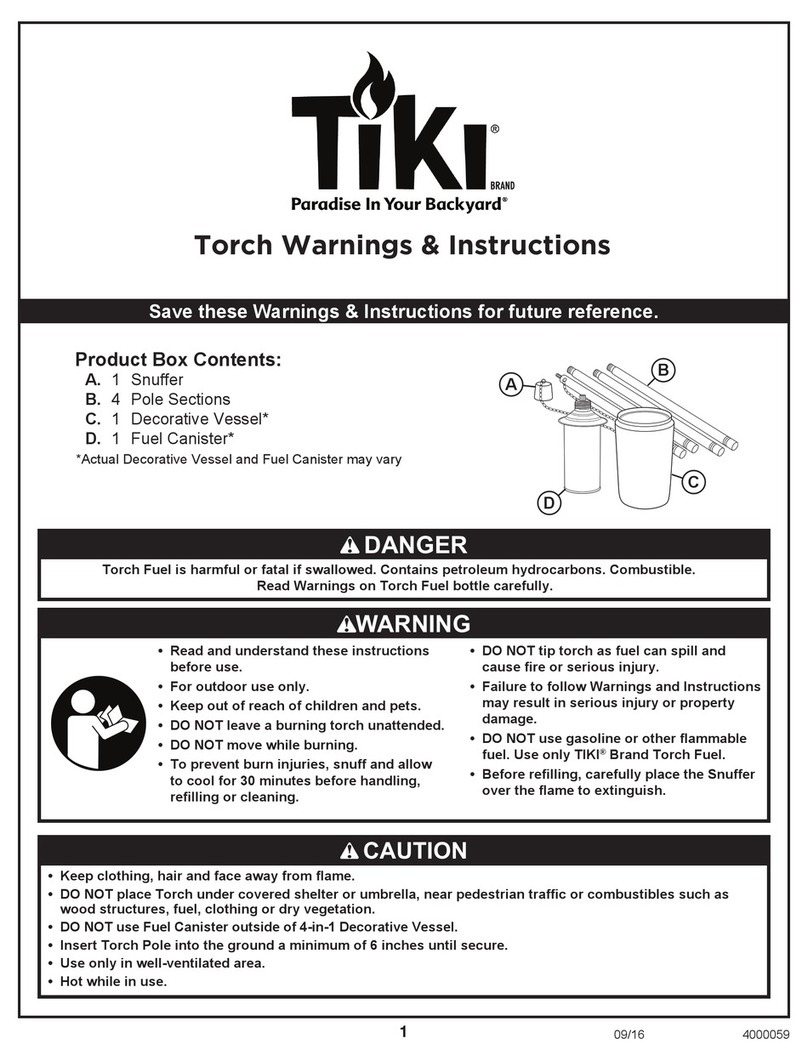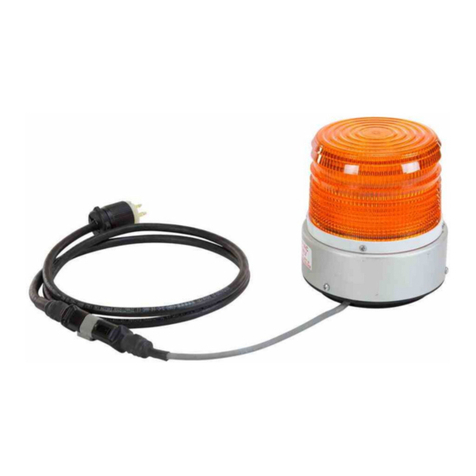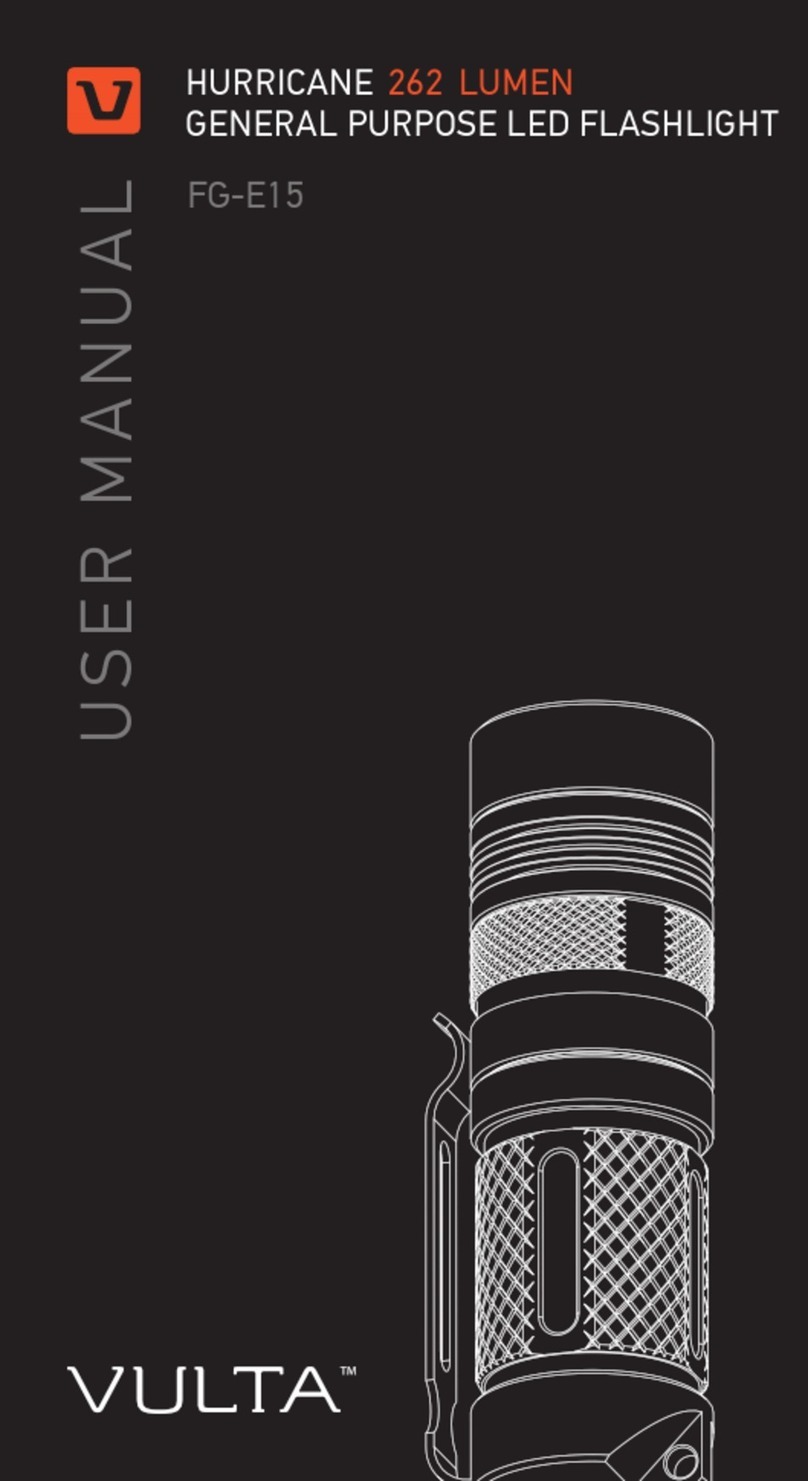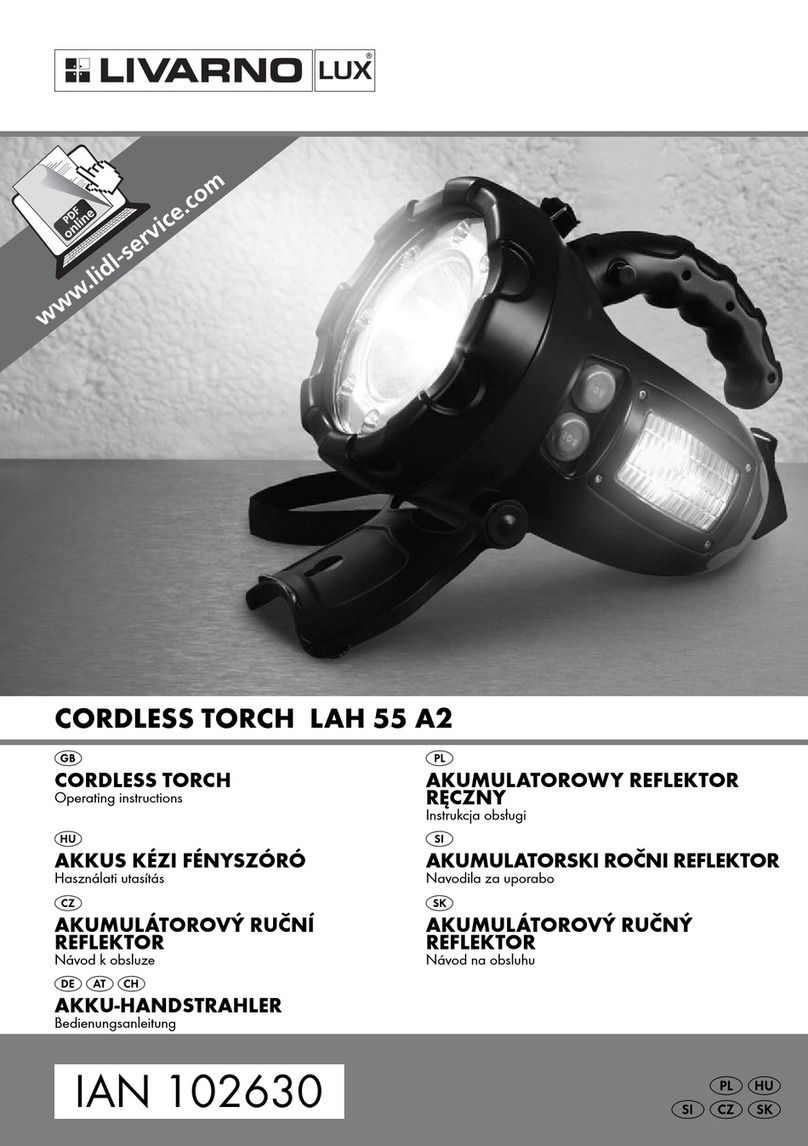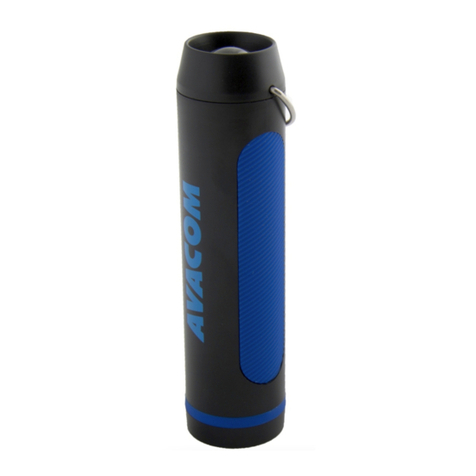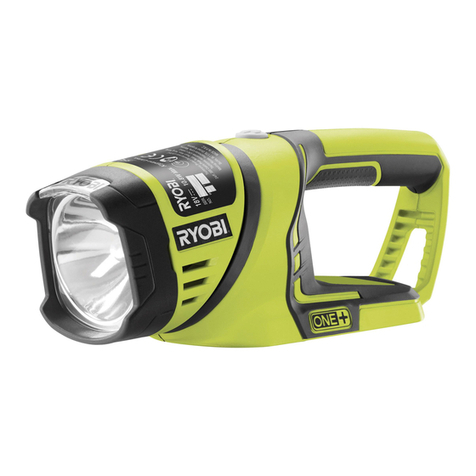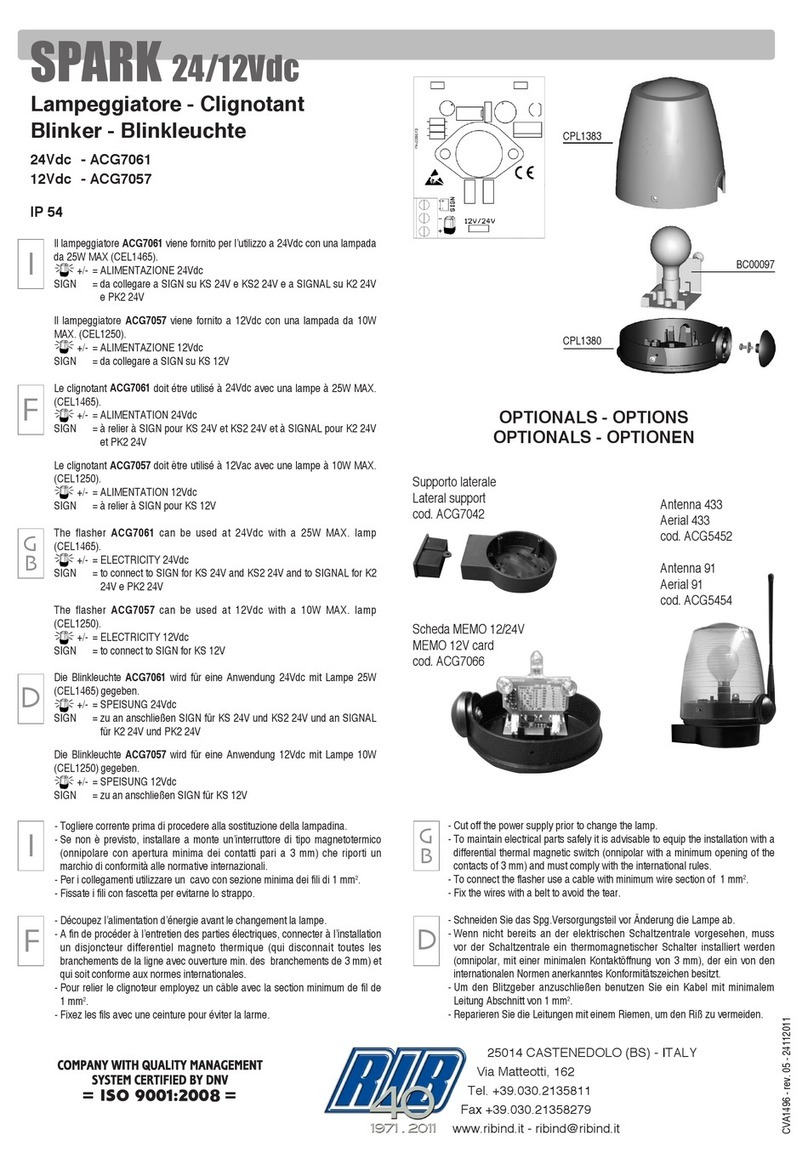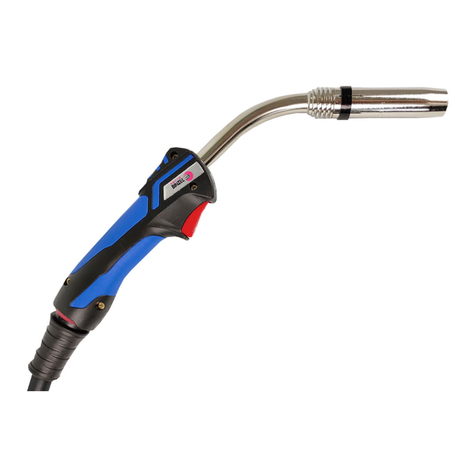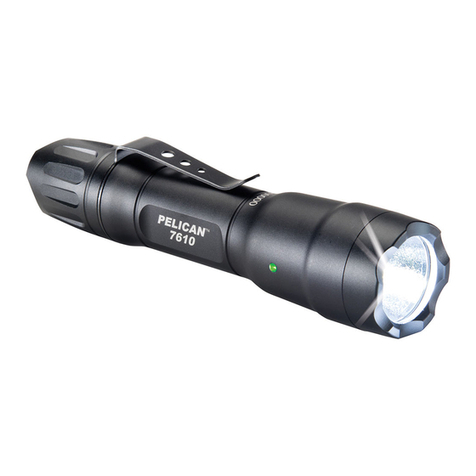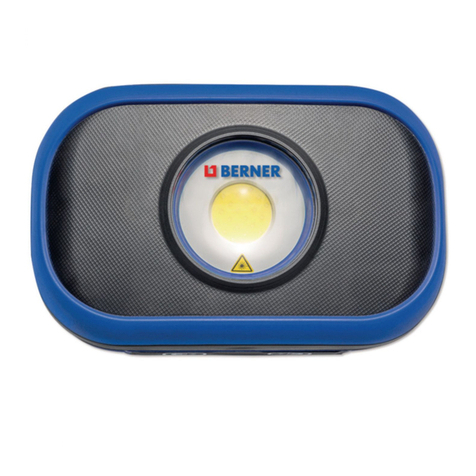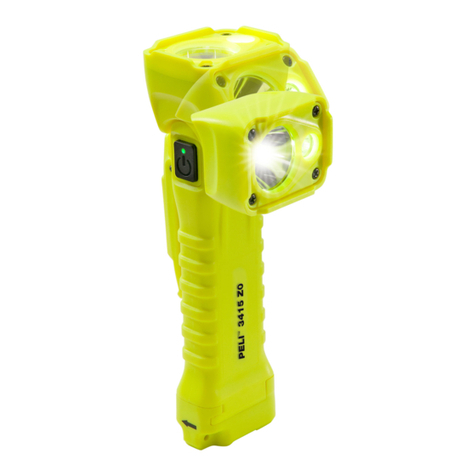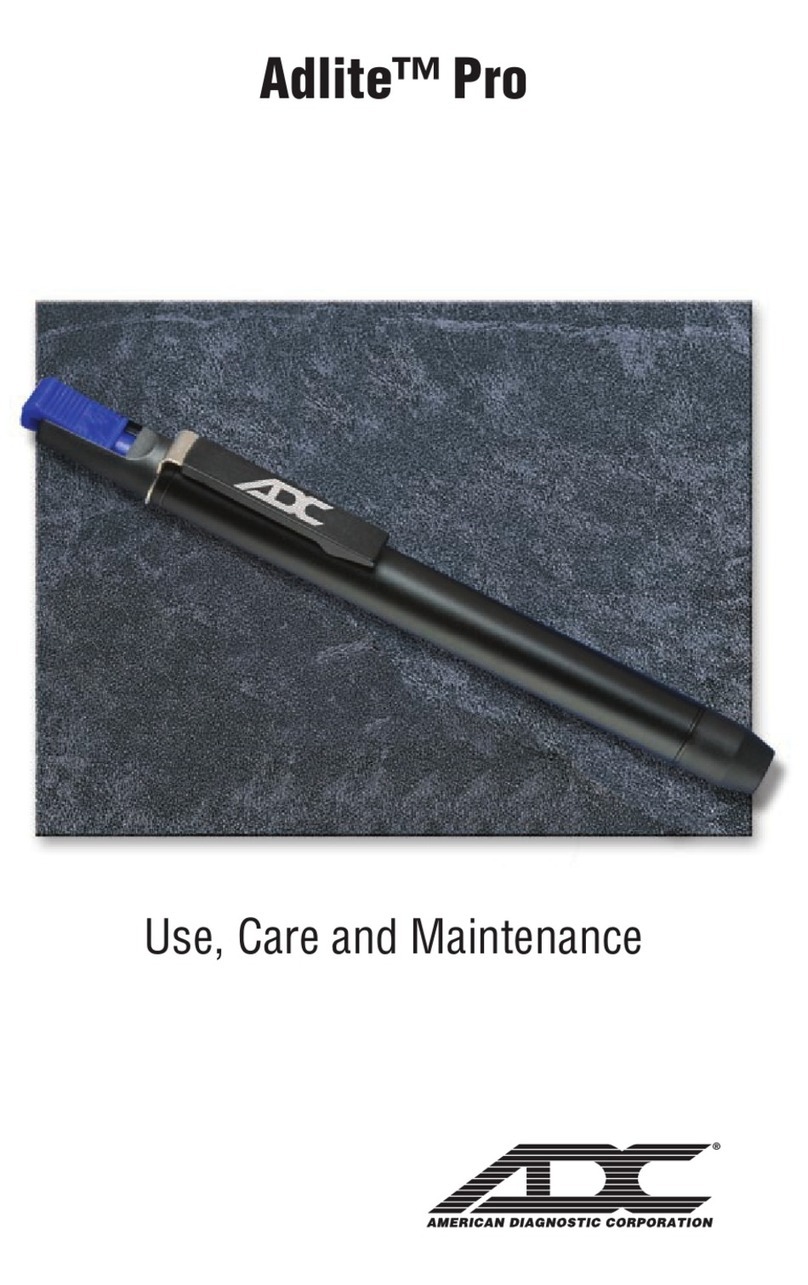3
PROFILUX
QUICK START GUIDE
1. FORMATION OF FLASH CAPACITORS
Formation of theflash capacitors is absolutely necessary when,
the unit is put into operation for the first time or
was not in use for more than 3 months.
FormationProcess:
1. Connect the supplied mains cable to a power outlet and power up theunit.
2. Increase the energy output in 15 min. intervals over the five f-stop
range (1.0 - 5.0).
3. Do NOT fire any flashes during the formation process!!!
4. Leave the unit set to full energy (1/1) for about one hour.
Formation of the flash capacitor is completed after one hour and
the unit is ready for use.
2. PUTTING INTO OPERATION
To remove the protection cap unlock the reflector lock on the bottom side of
the unit by pushing it away from the protection cap. Remove the protection
cap by turning it counter-clockwise and taking it out.
Place the supplied halogen tube into the unit, see “7. Changing halogen
and flash tubes”.
The unit is factory-set to 220-240 V / 50-60 Hz AC voltage. Before making
any connection make sure that the mains voltage match the indications on
the type label on the bottom of the unit.
Connect the unit to a wall outlet using the supplied power cable. Now, the
mid decimal point on the unit´s display lights up indicating stand-by mode.
Press the „I-0“ button to power up the unit.
3. SYNCHRONISATION WITH A SYNC CABLE
Plug the supplied sync cable (Code: MASYG) into the unit´s sync terminal and
connect it to your camera. In a multi-flash set-up the sync cable only needs to
be connected to the master-unit, all other slave-units will fire without delay,
triggered by their built-in IR receiver/Slave Cell. Remember to activate the IR
receiver/Slave Cell on each slave-unit.
4. OPTICAL SYNCHRONISATION
The unit may be fired using an Infrared Remote Trigger (Code: MUSEN,
sold separately). Attach the IR remote trigger to your camera’s flash shoe.
The flash unit’s IR receiver/Slave Cell must be activated by pressing the
corresponding button. The unit will fire synchronously with the camera when
it is being triggered. In a multi-flash set-up, the IR receiver/Slave Cell must
be activated on each unit.
5. SYNCHRONISATION WITH A RADIO TRIGGER
The unit/s may be fired using a radio trigger (Code: MURAS T, sold separately).
The radio trigger (transmitter) has to be attached to the camera´s flash shoe,
when the camera is triggered the unit/s will fire synchronously. For detailed
information on the MURAS T radio trigger please refer to the corresponding
user manual.
Selecting the receiving channel:
The unit is equipped with a 16-channel wireless receiver. Transmitter
(MURAS T) and receiver must be set to the same channel. The receiver can
be activated and set to the desired receiving channel with the following key
sequences:
- Press and hold the “TEST” button for approx. 3 sec. (the unit might emit
a beep depending on the selected flash monitor setting: “beep” or “lamp
ready”), the unit fires once and the symbol for the channel selection “CH”
appears on the display, now let go of the button.
- After approx. 2 sec. the unit emits a beep and the symbol on the display
changes from „CH” to „--“, meaning that the receiver is not activated and
no channel is selected (factory setting).
- The desired receiving channel can now be set by turning the output control,
e.g. to “12“ (channel 12). Confirm the selection of the channel by pressing
the “Test“ button, the previously selected output reappears on the display.
- The wireless receiver is now active and acts on the selected channel, the
blinking of the second decimal point on the unit´s display indicates the
activity of the receiver.
Changing the receiving channel:
- Press and hold the “TEST” button for approx. 3 sec. (the unit might emit
a beep depending on the selected flash monitor setting: “beep” or “lamp
ready”), the unit fires once and the symbol for the channel selection “CH”
appears on the display, now let go of the button.
- After approx. 2 sec. the unit emits a beep and the symbol on the display
changes from „CH” to the previously selected channel, e.g. to “07“
(channel 7). The desired receiving channel can now be set by turning the
output control, e.g. to “15“ (channel 15). Confirm the selection of the
channel by pressing the “TEST“ button, the previously selected output
reappears on the display.
- The wireless receiver is now active and acts on the selected channel, the
blinking of the second decimal point on the unit´s display indicates the
activity of the receiver.
